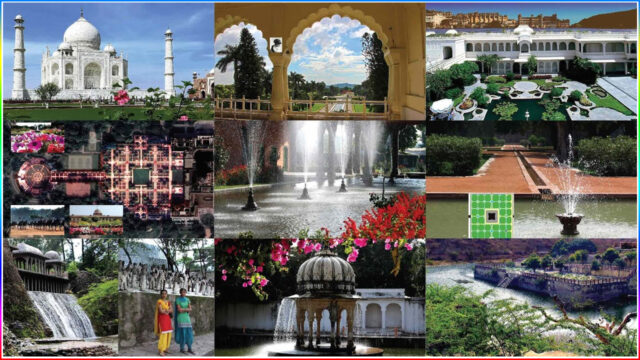Top 15 Beautiful Gardens In India
From the authentic Mughal nurseries to the advanced professional flowerbeds, there are such countless sorts of nurseries in India. Each has its own special appeal.
Who could do without strolling through a delightful nursery? It’s a nice change of pace from everyday life. Here, we investigate 15 of the most fabulous nurseries in India
15.Zakir Hussain Rose Garden, Chandigarh
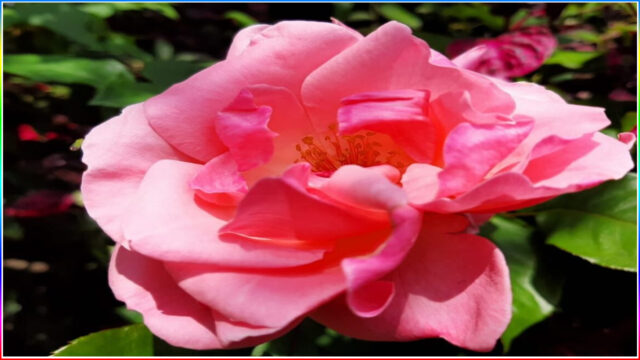
Popular as Asia’s biggest Rose Nursery, Zakir Hussain Rose Nursery is a rambling 30-section of land garden in Chandigarh city. In 1967, Dr. M.S. Randhawa, the first Chandigarh chief commissioner, established this magnificent garden.
The nursery gets its name from India’s previous president, Zakir Hussain. It is a scene garden with very much spread out yards and blossom beds.
Dabbed with huge number of rose plants of more than 1600 species, it is to be sure quite possibly of the most perfect rose garden in India. Beside roses, restorative trees like camphor and yellow gulmohar additionally embellish the nursery.
A relaxed walk around the nursery is totally invigorating. It is available from all pieces of Chandigarh city by taxi and state transport transports.
14.Eco Park, Kolkata
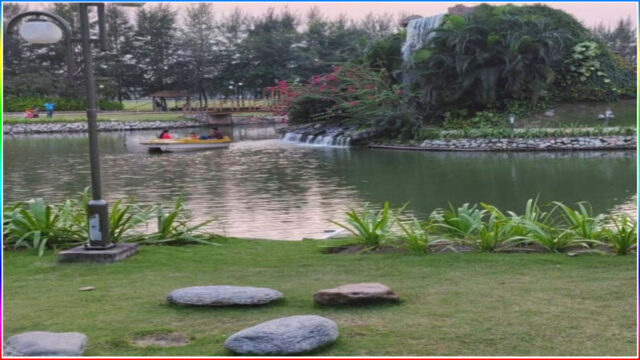
Spread over a huge field of 480 sections of land, Kolkata’s Eco Park is perhaps of the greatest metropolitan nursery in India. It was initiated by West Bengal CM Mamata Banerjee in 2012, making it a new expansion to the rundown of top attractions of Kolkata city.
Ecological zones and theme gardens are two examples of the park’s divisions. Wetlands and Prairies are considered piece of the environmental zone.
The seven wonders of the world take up an entire section. In this part of the nursery, you can observer copies of the seven miracles.
Eco Park is otherwise called Prakriti Tirtha (Nature Journey), attributable to the presence of immense biological zones inside the recreation area.
In addition, Eco Park’s theme gardens are a major draw for visitors. The Chinese nursery, formal nursery, butterfly garden, bonsai garden, cactus walk, bamboo nursery and fog house are a portion of the well known ones.
Many sporting exercises, such as zorbing, paddle sailing, paddling, speed drifting and kayaking are presented here.
The recreation area lies in the New Town region along the Biswa Bangla Sarani street. It is around 11 km away from Kolkata air terminal. From Howrah station transport terminal, any Rajarhat-bound transport can drop you to Eco park.
13.Cubbon Park, Bengaluru
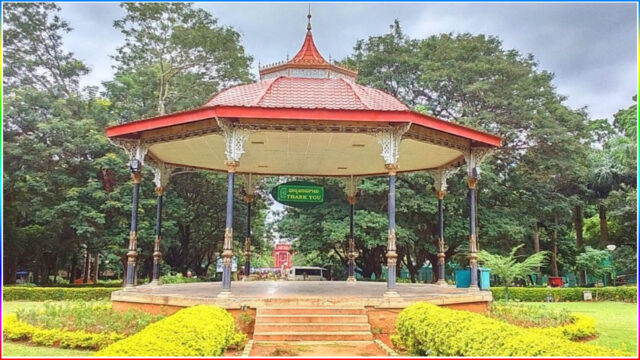
Cubbon Park is a 300-section of land green space in the core of Bengaluru city. It is prominently likewise called the “lung area of Bengaluru”.
British officials from Mysore state first created the 100-acre garden in 1870. Cubbon park gets its name from the longest-serving chief of Mysore state, Imprint Cubbon.
However, in 1927, in honor of the Wodeyar ruler Sri Chamarajendra Wodeyar, it was renamed Sri Chamarajendra Park. Locally, the recreation area is as yet alluded to as Cubbon Park.
The recreation area has near 100 botanical species inside its regions, including elaborate trees and numerous intriguing blooming plants. The garden’s natural beauty is enhanced by imported trees like the Silver oak.
The garden complex also contains a variety of historical structures and structures. Smack at the entry of the recreation area is the Karnataka High Court building, showing a noteworthy Gothic-style stone design.
Quite possibly of the most wonderfully spread out garden in India, Cubbon Park is a most loved spot for joggers in the city. This park offers something for everybody. A kids’ library, tennis structure and workmanship display likewise structure part of this green nursery complex.
Cubbon park metro station fills in as the closest metro station. You can likewise take state transport transports from different pieces of the city to arrive at this park.
12.Lady Hydari Park, Shillong

Found squarely in the focal point of Shillong city is a Japanese-style garden, known as Woman Hydari Park. A delightful stretch of bloom beds and wellsprings grab your eye, when you enter the nursery.
It is named after the spouse of the previous legislative head of Assam and the recent first woman of the state, Woman Hydari. The park has a beautiful landscape with willow trees, tiny ponds, and vibrant flowers. A comfortable stroll through this exquisite nursery is sheer satisfaction for nature darlings.
Police Bazar, Shillong’s main market, is just 2 kilometers from the park. You can enlist a taxi or an auto-cart to arrive at there.
11.Nishat Bagh, Srinagar
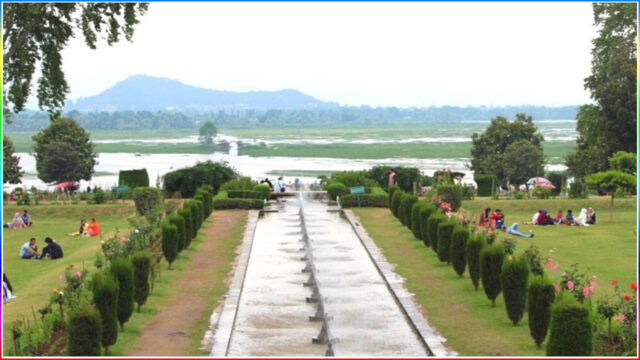
The 46 acre Nishat Bagh is the largest Mughal garden in the Kashmir valley. It is located on the eastern bank of the Dal Lake.
The nursery was arranged and worked in 1633 by Asaf Khan, the top state leader and father by marriage of Mughal head Shah Jahan. He was profoundly dazzled by the quality of this huge nursery. The engineering of Nishat Bagh is affected by Persian nurseries.
One of the great features of the nursery is the twelve porches that address the twelve zodiac signs. One of India’s most impressive Mughal gardens, Nishat Bagh is surrounded by majestic Chinar and Cypress trees along the shore.
This nursery is just about 11 km from Lal Chowk in Srinagar and 25 km from Srinagar air terminal.
10.Mughal Gardens, Delhi
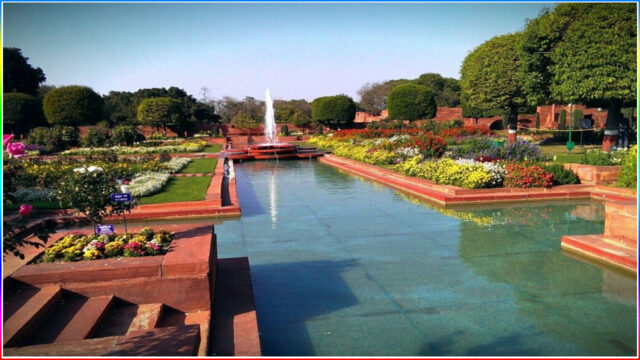
Inside the limits of Rashtrapati Bhawan (official home of Leader of India) in Delhi, lies the notable 15-section of land Mughal garden. It is structurally roused by the Mughal nurseries of Srinagar and Mehtab Bagh of Agra.
During the annual Udyanotsav celebration, which takes place in the months of February and March, the garden is made available to the general public.
Abounding with in excess of 150 assortments of roses, it is without a doubt perhaps of the most heavenly nursery in India. This garden complex also features tulips, hyacinth, daffodils, and lilies, in addition to roses.
A decent walk around this nursery during charming winters of Delhi, feels totally reviving. Focal Secretariat Metro Station is the closest metro station for Mughal Nurseries.
9.Lalbagh Botanical Garden, Bengaluru
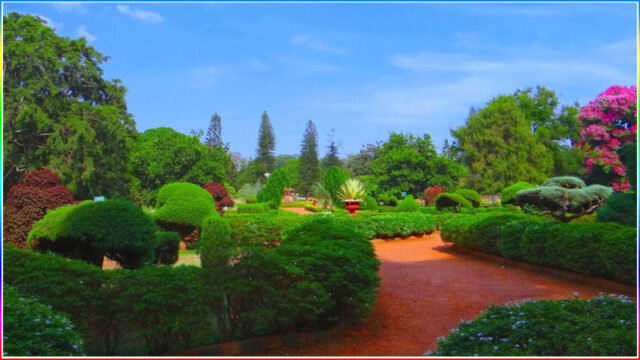
Lalbagh Botanical Garden is a 240-acre green space that gives the bustling city of Bengaluru some much-needed respite.
The nursery was initially made by Hyder Ali, who managed the Realm of Mysore during the eighteenth 100 years. His child Tipu Ruler extended and embellished it on the lines of the Mughal nurseries of Kashmir.
With an arrangement of uncommon and outlandish plants in plain view, Lalbagh is perhaps of the most awesome nursery in India.
An immense glass center and a 3000 million-year-old enormous stone are significant attractions of the recreation area. A geological landmark, the granite rock is also known as Lalbagh rock.
It is additionally popular for facilitating two yearly blossom shows, on the event of Republic Day and Autonomy Day.
A walkthrough of this beautiful nursery gives a chance to inundate yourself into the unadulterated excellence of nature. You can purchase saplings from the Nursery community arranged in the recreation area.
Lalbagh metro station fills in as the closest metro station to the nursery. Government transports additionally employ from different pieces of the city to this nursery.
8.Yadavindra Gardens, Pinjore
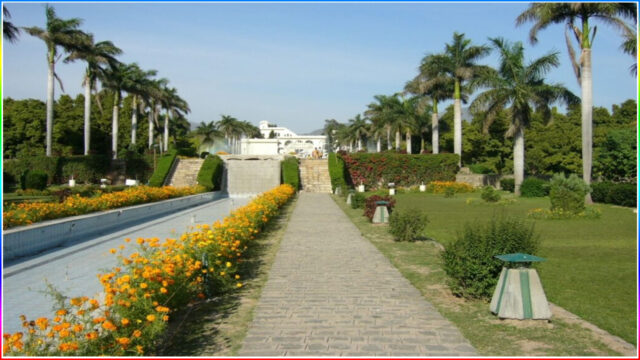
Yadavindra Nurseries, one of the most brilliant Mughal gardens in India, traces all the way back to the seventeenth hundred years. Spread north of 100 sections of land, the nursery is settled in Pinjore city of Haryana. It is additionally alluded to as Pinjore gardens.
Mughal ruler Aurangzeb fabricated this nursery as a late spring retreat for himself. The design arranging of the nursery was finished by Nawab Fidai Khan, who was the cultivate sibling of Aurangzeb.
During the nineteenth century English India, the Lord of Patiala claimed this package of land. It was utilized for developing roses to make aromas for the ruler.
The nursery was in the long run reestablished to its previous greatness by ruler Yadavindra Singh of the royal territory of Patiala. In his honor, the nursery was renamed Yadavindra Nursery.
On the highest terrace is the Rajasthani-Mughal-style Shish Mahal. On the second terrace, there is Rang Mahal, and on the third terrace, there is Jal Mahal with fountains.
It likewise contains an outside performance center on one of the patios. Around evening time, the enlightened complex offers amazing perspectives on the landmarks and the nursery.
The best way to see this lovely garden is on a heritage train ride through the complex. In addition, the garden plays host to the well-known Pinjore Baisakhi festival in April. It is effectively available from Chandigarh (22 km) by street.
7.Valley of Flowers, Chamoli
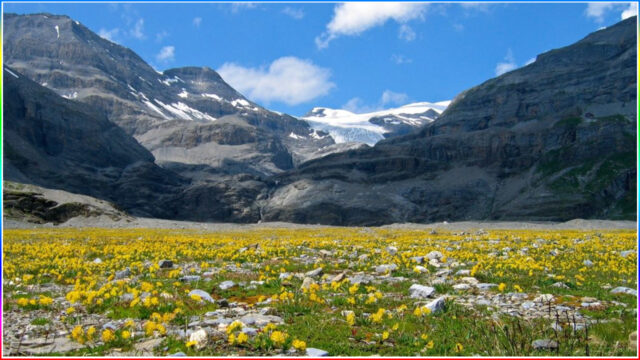
Concealed in the lofty Himalayan Reaches in Uttarakhand, the Valley of Blossoms is perhaps of the most lovely nursery in India. It wasn’t known to the world until an extraordinary pioneer and mountain climber Forthcoming S Smith found this high valley in 1937.
Rambling 87 sq km in Chamoli region, Valley of Blossoms is likewise a World Legacy Site. In spite of brutal climatic circumstances, a large group of lovely blossoms embellish this high-elevation valley.
The valley is met by the Pushpawati stream that rises up out of the close by ice sheets. This valley garden is a visual treat for hikers and nature lovers, with sparkling glaciers, cascading streams, and flowering meadows.
Inferable from the rich biodiversity and untamed life around here, it was proclaimed a public park in 1982. Also, the recreation area is well known for a few impeccable types of natural life including Himalayan weasel, red fox and snow panthers.
To arrive at here, you really want to travel for just about 16 km starting from Govindghat. The motorable street closes at Govindghat.
Govindghat is 273 kilometers away from the nearest railway station, Rishikesh. Jaunty Award Air terminal in Dehradun fills in as the closest air terminal. Govindghat is almost 292 km away from Dehradun air terminal.
6.Government Botanical Gardens, Ooty
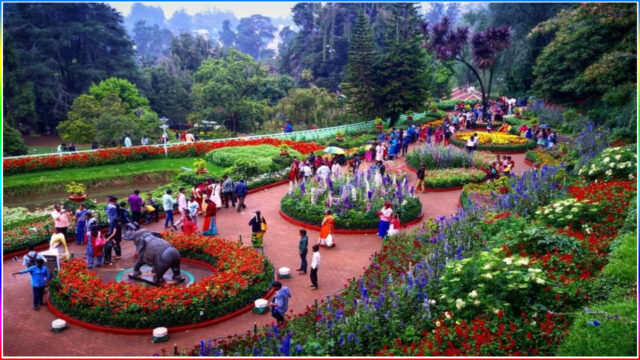
The Government Botanical Garden in Ooty is one of India’s most exquisitely landscaped gardens, perched on the lower Doddabetta peak.
It was spread out in English India in the year 1848. William Graham McIvor, a Scottish landscaper, was the engineer of this Ooty garden.
Crossing 55 sections of land, this huge nursery is isolated into six sections. Lower Nursery, Italian Nursery, New Nursery, Center, Wellspring Patio and Nurseries are the six unique segments.
The significant feature of the Lower Nursery is the guide of the Indian Association comprised of different plants. Italian Nursery was spread out during The Second Great War by the Italian detainees.
The New Nursery is the as of late added segment that involves a rose nursery, very much created blossom beds and images of the Public authority of India and the Public authority of Tamilnadu.
In 1912, the public studio was worked for gathering many sorts of blossoming plants.
The nurseries sit around 300 ft over the Lower Nursery. There are glasshouses to raise and developing colorful types of plants, like greeneries, desert flora and orchids.
This garden offers a wonderful opportunity to observe both native and exotic plants.
Ooty is associated with Mettupalayam by meter measure train. Coimbatore is the closest significant railroad station.
5.Mehtab Bagh, Agra
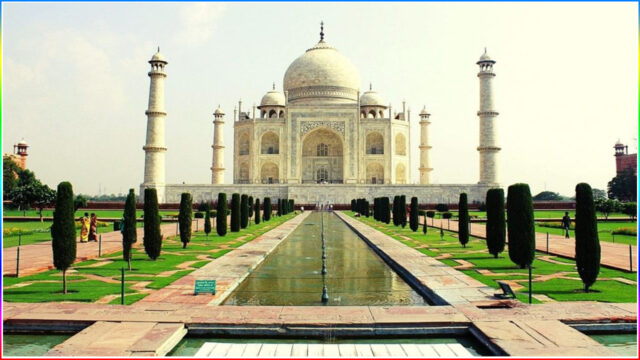
Settled right inverse the Taj Mahal complex in Agra, Mehtab Bagh is one of the most entrancing Mughal gardens in India. Mehtab Bagh in Urdu in a real sense means ‘moonlight garden’.
Babur, the first emperor of the Mughal dynasty, constructed the square-shaped garden in the 16th century.
Shah Jahan distinguished it as the ideal area for survey the Taj Mahal from the contrary bank of the Yamuna. The nursery is evenly adjusted to offer unhindered perspectives on the superb landmark.
At the point when the nursery was initially spread out, it was decorated with drinking fountains, pools, immense structures and white mortar walkways. Notwithstanding, the absence of appropriate upkeep and successive flooding nearly destroyed this enchanting nursery.
The Archaeological Survey of India (ASI) took over in the 1990s and began the restoration process. The present Mehtab Bagh is the reestablished garden, wherein the Mughal-period vibe has been reproduced by the ASI.
For visiting this nursery, you can purchase tickets online through ASI, Agra site.
It is a 243 km drive via vehicle from Delhi to the Taj Mahal complex. The closest railway station is Agra Cantt, which is 6 kilometers away.
4.Shalimar Bagh, Srinagar
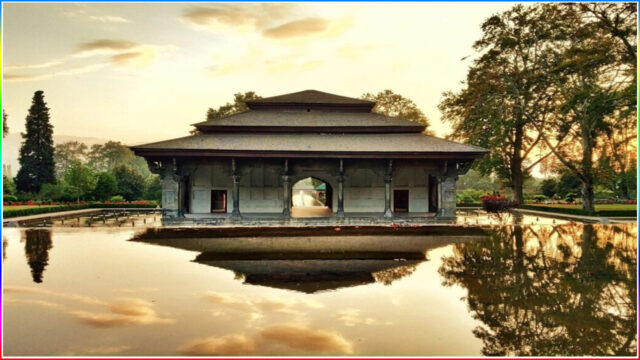
The biggest Mughal nursery of Kashmir, Shalimar Bagh lies along the coastline of Dal Lake. It was spread out by Mughal head Jahangir for his sovereign Noor Jahan.
Shalimar garden is otherwise called Farah Baksh and Faiz Baksh. The format of this 31-section of land garden is motivated by Persian (Iranian) gardens.
It includes three porches dabbed with pretty blossoms. Diwan-e-Aam, the garden’s outermost section, was accessible to the general public.
In the focal point of the nursery was the Diwan-e-Khas, available to the visitors of the court. The third porch was intended for ladies from the regal family.
Shalimar Bagh is to be sure one of the most gorgeous Mughal gardens in India. This garden has stunning views of the Dal Lake and is surrounded by Chinar’s tall trees. It is a 25-minute drive from Lal Chowk (15 km) in Srinagar.
3.Rock Garden, Chandigarh

In the midst of the clamoring city of Chandigarh, lies a particularly spread out form garden. One of India’s best eco-gardens is the 40-acre rock garden in Chandigarh.
Great many figures worked from squander materials and scrap are a significant draw for guests. The rambling nursery contains yards, man-made cascades, structures, slick walkways and an outside theater.
Nek Chand Saini, an unassuming vehicle official and a self-trained craftsman, was the minds behind the stone nursery. Before the city authorities discovered it in 1975, he had the idea for this garden and worked on it in secret during his spare time for nearly ten years.
This was viewed as an unlawful development based on a bundle of government land. After much thought, the development was made lawful and the nursery was permitted to be opened for general society.
From that point forward, Nek Chand’s creation has developed from a 12-section of land complex to a 40-section of land garden realm. A walkthrough of this nursery mirrors the creative mind and energy of the maker.
This curious nursery should highlight in your agenda assuming that you are visiting Chandigarh. The stone nursery is found 7 km away from Chandigarh rail route station and is almost 15 minutes drive.
2.Tulip Garden, Srinagar
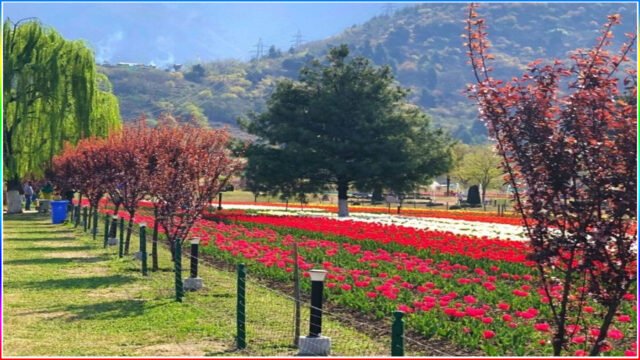
Set against the scenery of beautiful Dal Lake, Indira Gandhi Dedication Tulip garden is one of its sort in India. It is situated on the lower regions of the Zabarwan Reach in Srinagar.
It is eminent as the biggest tulip garden in Asia, spread over an incredible 75 sections of land. The nursery was opened for sightseers and people in general on the loose in 2007.
This astoundingly arranged garden involves seven porches with brilliant multi-hued tulip blossoms. Other than tulip, Hyacinths, daffodils and ranunculus blossoms likewise add to the quality of the nursery.
One of the significant features of the tulip garden is the yearly Tulip Celebration, coordinated during the long stretch of April. It is gone to by great many explorers and blossom darlings. An extensive variety of tulip blossoms is exhibited during the celebration.
Make plans to visit Kashmir Valley in the spring to take in its stunning beauty. The nursery is helpfully reachable from Srinagar by a taxi. Lalchowk Srinagar is approximately 8 km away. The closest railroad station and air terminal are in Srinagar.
1.Brindavan Gardens, Mysore
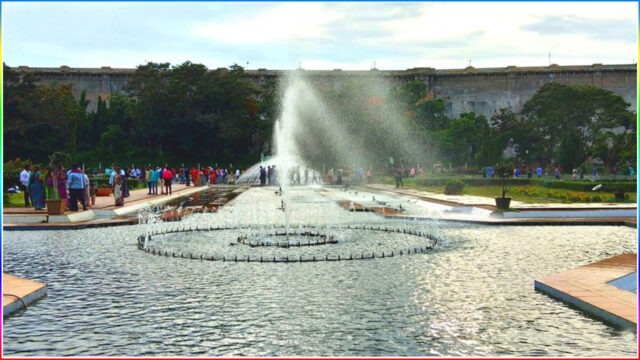
Rambling 60 sections of land inside the Krishnaraja Sagar dam (KRS dam) complex, Brindavan Nurseries is around 21 km from Mysore city. The dam complex structures a piece of Mandya region in Karnataka.
KRS dam was built by Krishnaraja Wodeyar IV across the waterway Kaveri, one of the noticeable Indian streams.
To improve the region around the dam, the then diwan of the realm of Mysore, Sir Mirza Ismail established this nursery. Conceptualized by him in 1927, it required 5 years to assemble the nursery completely.
Brindavan Nurseries is prestigious as one of the most outstanding porch gardens in India. It is roused by the Lalbagh Professional flowerbed in Bengaluru.


